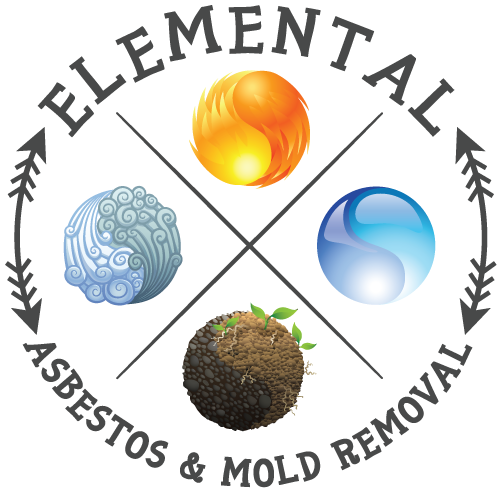FAQ
Questions
There can be a lot of confusing information regarding asbestos and mold out there, so here’s primer to help you understand what you’re dealing with.
WHAT IS ASBESTOS?
Asbestos is the umbrella name for six kinds of naturally occurring minerals. Made up of fine, durable, and heat-resistant fibres, it was once used widely in many products for a long time because of specific properties that made it a versatile, convenient, and profitable. However, throughout the 20th century it was discovered that asbestos was a carcinogen responsible for the sickness and death of thousands of people exposed to it.
HOW DOES ASBESTOS MAKE YOU SICK?
Asbestos is made up of small fibres. These fibres are very light and friable, or easy to break, which means that disturbing the material can result in the fibres becoming airborne. When these fibres are inhaled or swallowed, the fibres become lodged in the lungs and can irritate and scar the soft tissue there. Over time, this scarring can affect your breathing and turn into cancerous tissue.
IS THERE A SAFE AMOUNT OF ASBESTOS EXPOSURE?
While long term and high-level exposure to asbestos increases the likelihood of health problems and developing cancer, there is no established level of “safe” asbestos exposure. Even a small amount of exposure carries health risks.
WHAT KINDS OF ASBESTOS ARE THERE?
The types of asbestos are split into two categories based on the physical qualities of the fibres. The serpentine category includes chrysotile, the fibres of which are white and very long and curly. Chrysotile was the most commonly used asbestos type due to being the most flexible. The amphibole category includes the types of asbestos that are more needle-like, and come in a variety of colours. The types of asbestos in this category are amosite (brown asbestos), crocidolite (blue asbestos), tremolite, anthophyllite, and actinolite.
WHAT IS MOLD?
Molds are a type of fungus, micro-organisms that eat away at dead organic material. Mold spores are generally too small to see until they’ve found a place to start growing, at which point mold appears to be fuzzy and black, white, yellow, pink, or green. Mold grows when it has moisture, food (organic materials), and in almost any temperature. Mold thrives best in humid conditions with stagnant air. There are several thousands of types of mold.
ARE ALL MOLDS HARMFUL?
There are several types of toxic molds that are considered deadly to humans and animals, which release mycotoxins capable of causing death. The most well-known toxic mold is referred to as “black mold”, although there are several different kinds of toxic molds that cannot be identified solely based on appearance. However, there are also plenty of molds that carry minimal to no health risks, although they do still pose a threat to property damage. People with asthma, allergies, respiratory problems, or poor immune systems are most likely to be negatively affected by mold to a greater extent than others.
WHERE CAN MOLD BE FOUND?
Mold can be found in both indoor and outdoor environments, wherever the conditions are warm and moist enough, and where there is an acceptable food source. In homes and businesses, mold can most commonly be found in bathrooms, kitchens, windowsills, basements, and any other location often exposed to moisture and humidity.
WHAT KINDS OF MOLD ARE HARMFUL AND WHAT ARE NOT?
The hazard levels of different kinds of mold are broken into three categories. Hazard Class C molds typically pose little to no risk to human health, but are still capable of property and structural damage. Hazard Class B Molds are known to cause allergic reactions and similar symptoms. Hazard Class A molds includes toxic molds that present hazards to your health and should be dealt with immediately. Because of how varied molds are, it is difficult to classify a mold based off its appearance, so it’s best to have it tested.
